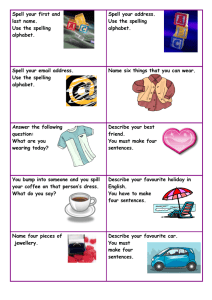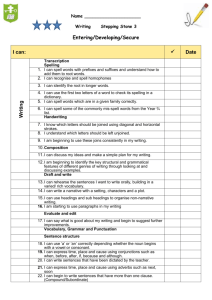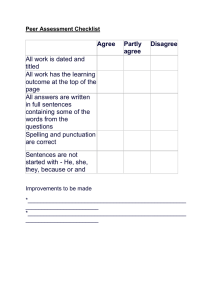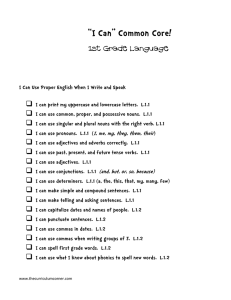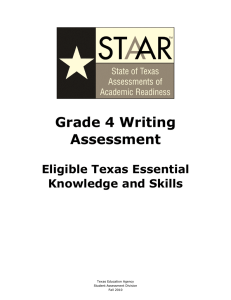STAAR Standards Snapshot - Grade 4 Writing Readiness Standards Supporting Standards
advertisement
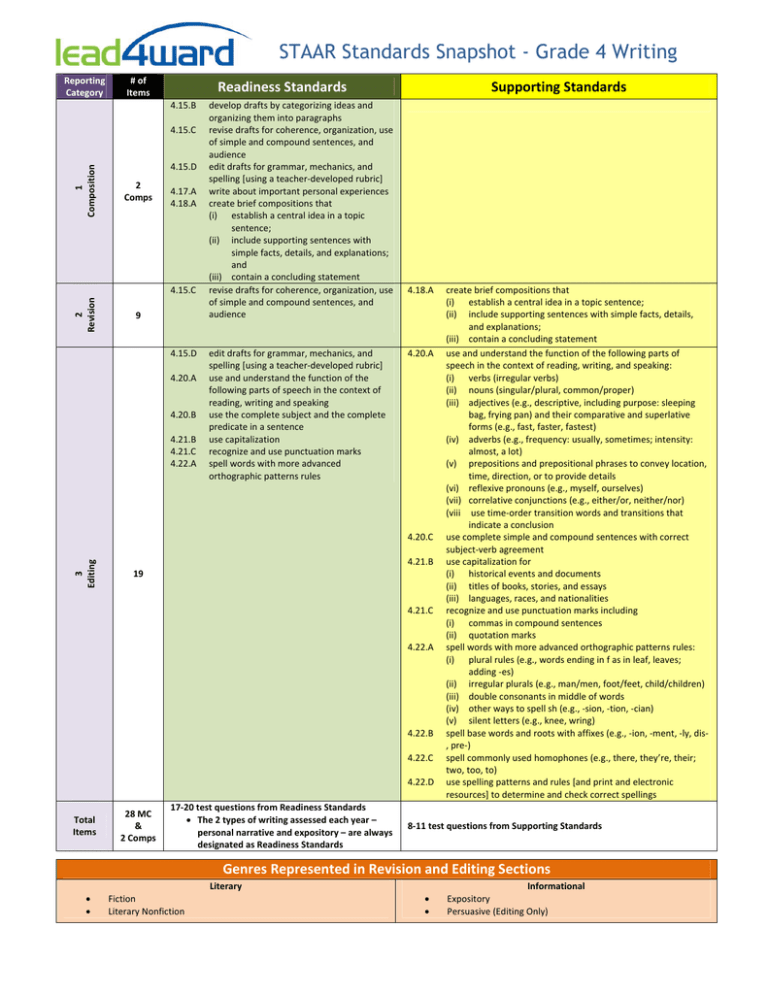
STAAR Standards Snapshot - Grade 4 Writing Reporting Category # of Items Readiness Standards 1 Composition 2 Revision 2 Comps 9 develop drafts by categorizing ideas and organizing them into paragraphs 4.15.C revise drafts for coherence, organization, use of simple and compound sentences, and audience 4.15.D edit drafts for grammar, mechanics, and spelling [using a teacher‐developed rubric] 4.17.A write about important personal experiences 4.18.A create brief compositions that (i) establish a central idea in a topic sentence; (ii) include supporting sentences with simple facts, details, and explanations; and (iii) contain a concluding statement 4.15.C revise drafts for coherence, organization, use of simple and compound sentences, and audience Supporting Standards 4.15.B 3 Editing 4.15.D edit drafts for grammar, mechanics, and spelling [using a teacher‐developed rubric] 4.20.A use and understand the function of the following parts of speech in the context of reading, writing and speaking 4.20.B use the complete subject and the complete predicate in a sentence 4.21.B use capitalization 4.21.C recognize and use punctuation marks 4.22.A spell words with more advanced orthographic patterns rules 19 Total Items 28 MC & 2 Comps 17‐20 test questions from Readiness Standards The 2 types of writing assessed each year – personal narrative and expository – are always designated as Readiness Standards 4.18.A create brief compositions that (i) establish a central idea in a topic sentence; (ii) include supporting sentences with simple facts, details, and explanations; (iii) contain a concluding statement 4.20.A use and understand the function of the following parts of speech in the context of reading, writing, and speaking: (i) verbs (irregular verbs) (ii) nouns (singular/plural, common/proper) (iii) adjectives (e.g., descriptive, including purpose: sleeping bag, frying pan) and their comparative and superlative forms (e.g., fast, faster, fastest) (iv) adverbs (e.g., frequency: usually, sometimes; intensity: almost, a lot) (v) prepositions and prepositional phrases to convey location, time, direction, or to provide details (vi) reflexive pronouns (e.g., myself, ourselves) (vii) correlative conjunctions (e.g., either/or, neither/nor) (viii use time‐order transition words and transitions that indicate a conclusion 4.20.C use complete simple and compound sentences with correct subject‐verb agreement 4.21.B use capitalization for (i) historical events and documents (ii) titles of books, stories, and essays (iii) languages, races, and nationalities 4.21.C recognize and use punctuation marks including (i) commas in compound sentences (ii) quotation marks 4.22.A spell words with more advanced orthographic patterns rules: (i) plural rules (e.g., words ending in f as in leaf, leaves; adding ‐es) (ii) irregular plurals (e.g., man/men, foot/feet, child/children) (iii) double consonants in middle of words (iv) other ways to spell sh (e.g., ‐sion, ‐tion, ‐cian) (v) silent letters (e.g., knee, wring) 4.22.B spell base words and roots with affixes (e.g., ‐ion, ‐ment, ‐ly, dis‐ , pre‐) 4.22.C spell commonly used homophones (e.g., there, they’re, their; two, too, to) 4.22.D use spelling patterns and rules [and print and electronic resources] to determine and check correct spellings 8‐11 test questions from Supporting Standards Genres Represented in Revision and Editing Sections Literary Fiction Literary Nonfiction Informational Expository Persuasive (Editing Only)
